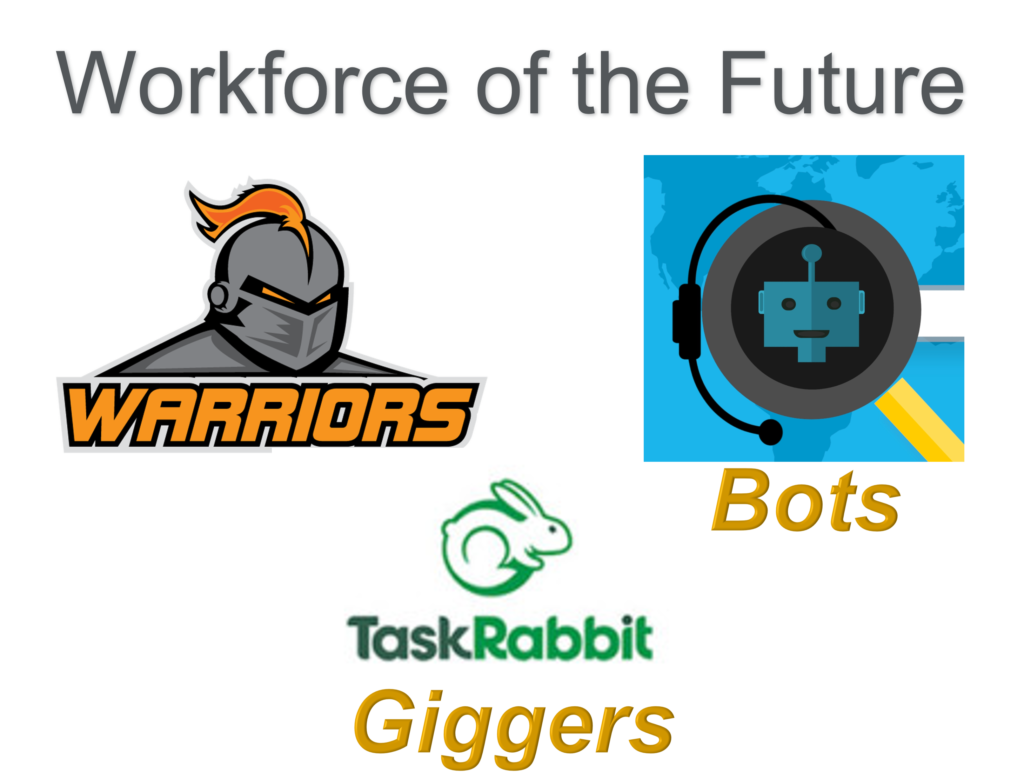What will the workforce of the future look like? I use a simple taxonomy that is focused more on the knowledge workforce. The three main groups are warriors, giggers, and bots.
- Warriors: fiercely committed to their job and organization and will go above and beyond the call of duty
- Giggers: take a transactional approach to their gigs or full-time jobs in which they will provide what they believe is reasonable and nothing more; they are not deeply committed to any job, organization, or even to work itself.
- Bots: programs run algorithmic or AI capable of mimicking human behavior

Who’s up and who’s down?
The warriors are a shrinking segment – not quite a dying breed. There are people for whom their job is their passion and interest. Me, for one. I would make a distinction between profession and any particular organization. The warriors are for sure committed to their profession, and may or may not be as committed to the particular organization they are with.
The giggers are a growing segment. The Great Resignation might be viewed as the rise of the Giggers, who to some degree are mad as hell and not going to take it anymore (guess the movie). They may well be good workers, but when the [virtual] whistle blows, they go home.
The bots are a small but growing segment. We may already be working with them and not even know it. It will be interesting to see just how good they get. It’s not easy. But they work and don’t complain.
The big problem
The biggest problem that I’ve seen is leaders expecting warriors and getting giggers … and being frustrated by that. You can’t make a gigger into a warrior, so you need to adapt to who they are. And don’t forget to be good to your warriors. Personally, I prefer a small number of warriors to a large number of giggers and bots – spoken like a true warrior! – Andy Hines

This is so perfectly true even today. The vitriol of what giggers expect of employers, and the fierce loyalty of the warriors – it’s everywhere in social media right now.